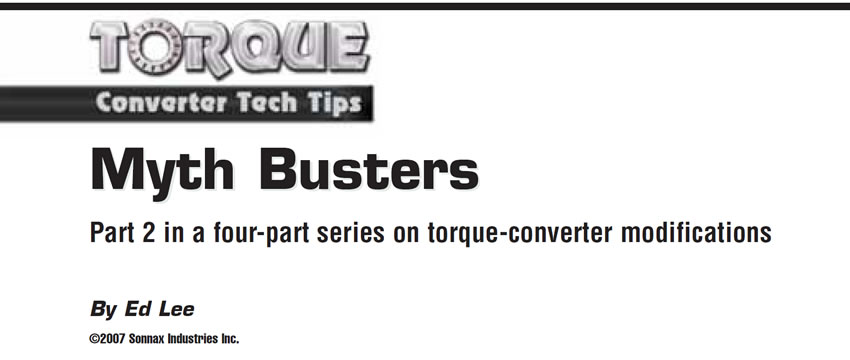Mystery Noise in the ZF 5HP19/24
It’s not uncommon to hear customer complaints about a noise coming from a vehicle equipped with either a ZF 5HP19 or ZF 5HP24 transmission. The noise is most often described as a squealing or squawking sound and can be heard when the customer lifts his foot off the accelerator pedal. The sound is similar to that of a bad transmission pump and can be heard in any forward range but is most noticeable in first or second gear.
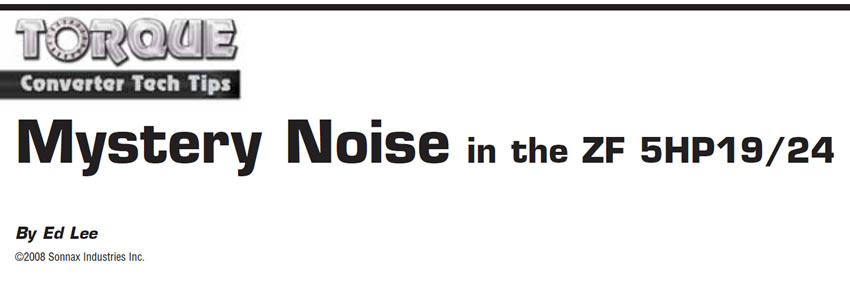
Ins & Outs of Impeller Vanes and Weld Gaps
The movement of a vehicle relies on the torque converter’s ability to transfer the torque of the engine to the transmission (the beginning of the driveline).
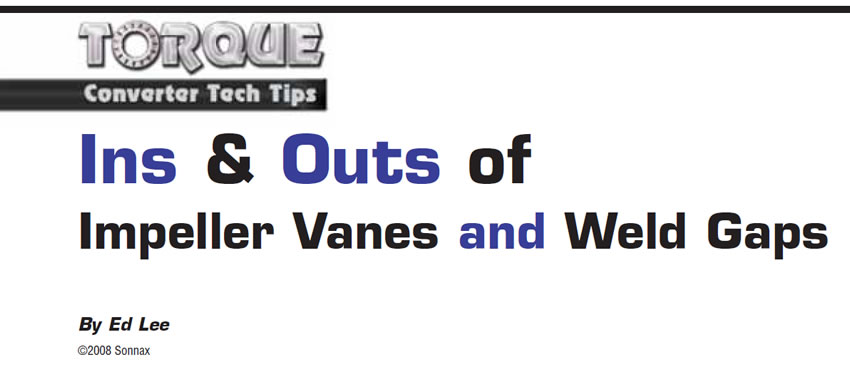
More Details
Producing a quality rebuilt torque converter is a major accomplishment. You have to perform many rebuild procedures correctly to end up with a quality finished product. Simply knowing the difference between the right and wrong way of doing a rebuild procedure doesn’t always guarantee success. It’s important to pay attention to the many details of the rebuild, and the proper use of shims is one such detail.
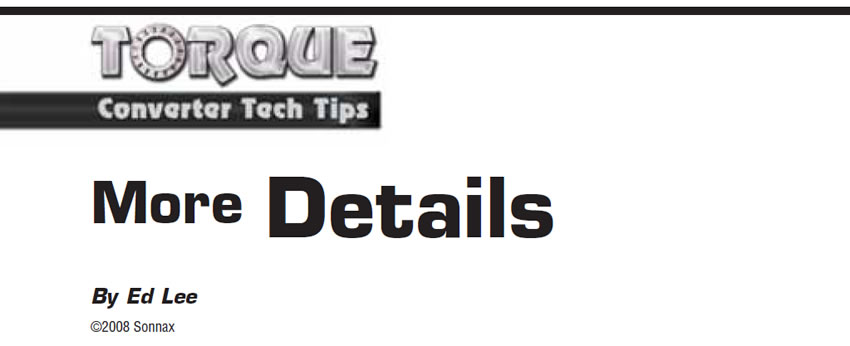
It’s All in the Details
If you want to rebuild a torque converter and do a good job, you need to pay attention to many details. Unfortunately, in today’s business environment that critical attention to detail is often sacrificed in the race to just get the job done and get it done quickly. If you were fortunate enough to have a good mentor when you were learning about torque converters, you learned that there’s a right way and a wrong way to perform most tasks. In some cases there’s a right way and several wrong ways to do the same job.
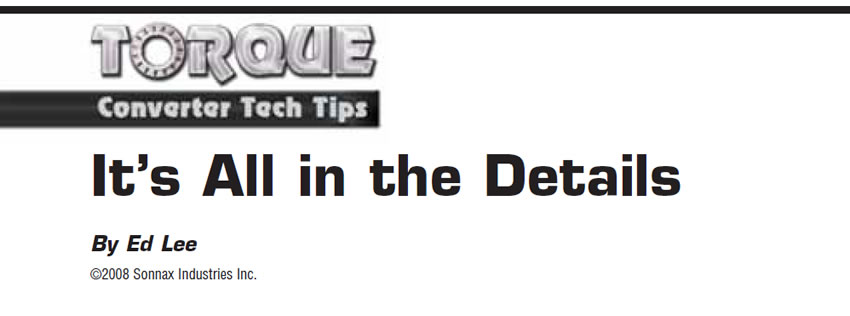
Clutch-Release Clearance 101
In a torque converter, clutch-release clearance (CRC) is the distance that the torque-converter-clutch (TCC) piston travels from the release to the apply position. This distance is also the amount of free play that is available to the clutch or clutches when the TCC piston is in the release position.

Identifying Those GM 300mm Dampers
The 300mm converter has become very popular in GM units. First used in the Corvette and F-model vehicles (Firebirds and Camaros), today it is also used in most trucks, vans and SUVs. The converter is also manufactured in a 280mm version (VJCX, for example).

Which Generation of Torque Converter?
Since the release of the Allison 1000/2000/2400 series transmission, four basic torque-converter configurations have been used. TC-210, TC-211, TC-221 and TC-222 can be found in Group 21 of the Allison Parts Book, and these four converters all have different stall torque ratios and “K” factors. Over the years several revisions have been made to the torque-converter assembly process for all four converters, and each time a change was made, a new part number was assigned. None of these changes had an effect on the performance or functionality of the torque converter. Different generations of each of the four converters are completely interchangeable with other generations of the same type.
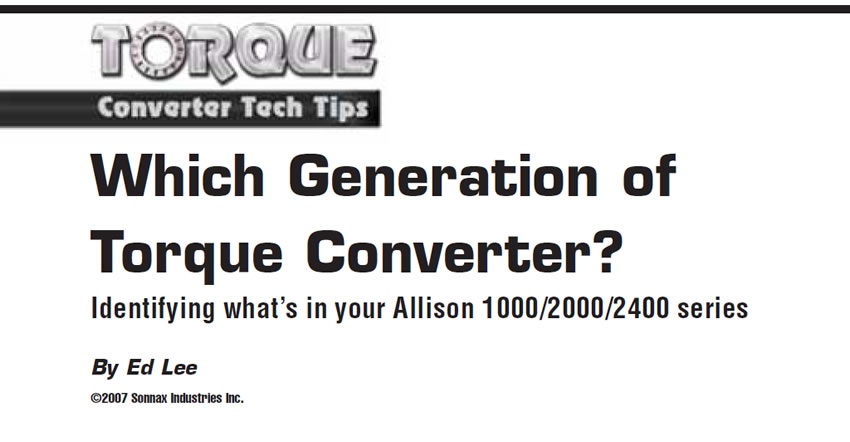
Torque-Converter Forensics
When a torque converter fails, the results are quite often catastrophic. It may be difficult to determine which component failed first and even more difficult to determine the root cause of the failure. Each failure should be viewed as an opportunity to learn, and a failure that is caught before the catastrophic stage should be viewed as a golden opportunity.
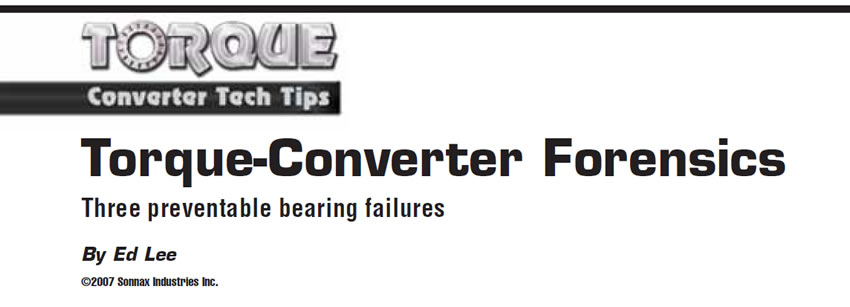
Cleaning a difficult area
If you were raised in a religious family you probably heard that “cleanliness is next to godliness.” If you happen to be the parent of a 4-year-old, you’ve learned that cleanliness is next to impossible. In the transmission industry, cleanliness is a necessity. One small particle can stick a valve or cause a solenoid to malfunction and turn an otherwise perfect job into a nightmare.
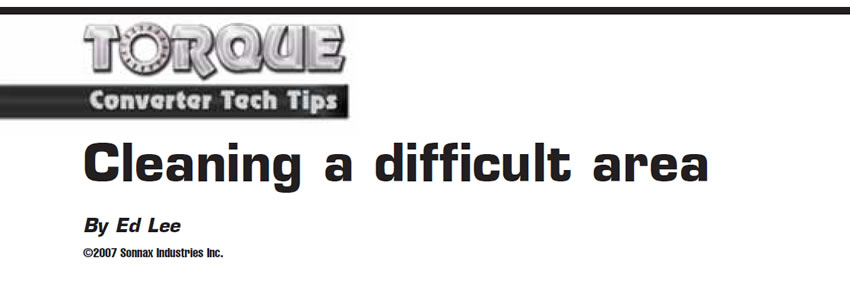
Myth Busters
In the past three articles we looked at the evaluation of torque-converter modifications on a chassis dyno. The modified converters were compared with an OEM converter, and the testing was done by instructor Sean Boyle and three of his students at Southern Illinois University. An MD-250 Mustang Chassis Dyno was used for the evaluations, and a Dodge Durango RT, equipped with a stock 5.9-liter gas engine and 46RE transmission, was used as the test vehicle. All the converters were subjected to wide-open-throttle (WOT) horsepower tests. The vehicle was locked in third gear (direct drive) and TCC lockup was inhibited.
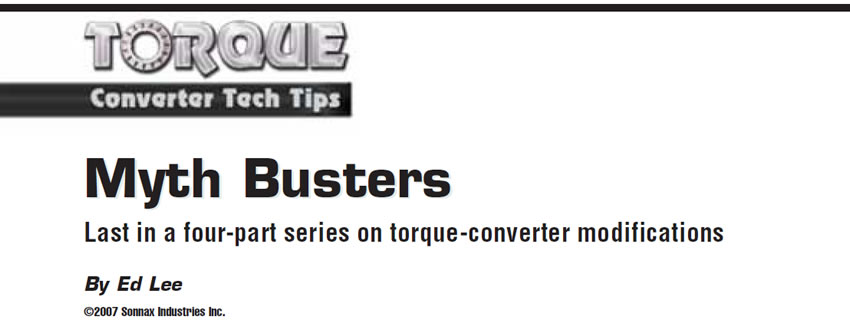
Myth Busters
In parts 1 and 2 we looked at the results of chassis-dyno testing conducted on torque-converter modifications by Sean Boyle’s students in the automatic-transmission course at Southern Illinois University. The testing was done on an MD-250 Mustang chassis dyno, and the test vehicle was a stock 2000 Dodge Durango RT equipped with a 5.9-liter gas engine and a 46RE transmission.
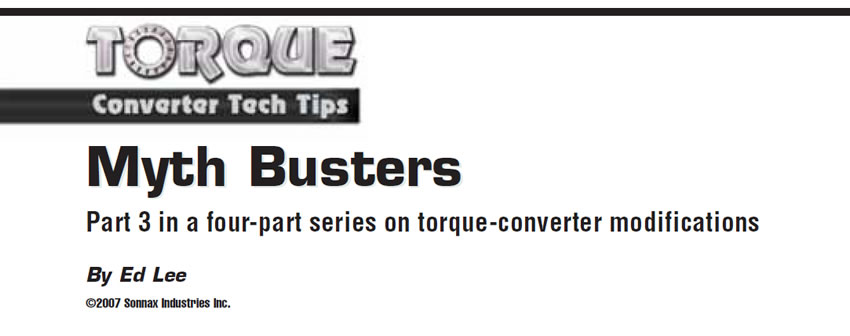
Myth Busters
Last month we reviewed the results of chassis dyno testing done by Sean Boyle’s students in the automatic-transmission class at Southern Illinois University. Four modified torque converters were evaluated. The testing was done on an MD-250 Mustang Chassis Dyno, and the test vehicle was a stock 2000 Dodge Durango RT equipped with a 5.9-liter gas engine and a 46RE transmission.
